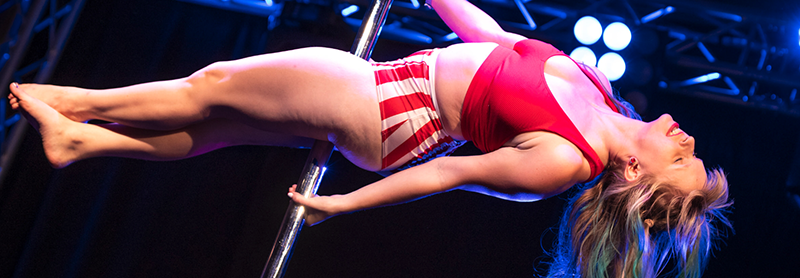This post is based on the webinar “Out of the Dark, Tax Planning for the…

Biomechanics and Injury Prevention in Pole Dancing: Key Takeaways
Jumping back in time to the very first IPIA webinar (IPIA members can watch the webinar at this link), here are some key takeaways from Dr. Jenny Honnicutt’s talk about injury prevention and pole dancing.
This webinar was given in 2020, before Mobility for Pole (by Colleen Jolly) or Pole Anatomy: Volume 1 (by Neola Wilby, aka the Pole PT). Dr. Jenny is a figure skater and pole dancer who loves to nerd out on biomechanics in all things.
Injury Patterns in Pole Dancing
Currently, there are still not many scientific and peer-reviewed studies on injuries in pole dancers. Dr. Joanna Nicholas wrote her dissertation on injuries in pole dancers and this is what she found:
- In a 12-month study of 66 pole athletes with 103 injuries:
- 59% were acute injuries (occurring suddenly)
- 41% were overuse injuries (developing gradually)
- The most common injury sites were:
- Shoulders (most common)
- Thighs (second most common)
- Thigh injuries included hamstring strains, tendon injuries, and nerve issues
Your Shoulders are Strong, Now Let’s Talk Legs
A central concept Dr. Jenny explained was the “Point of No Return” – a biomechanical position of the knee that increases injury risk:
- Scientifically known as “dynamic valgus”
- Characterized by knees collapsing inward toward the midline
- Creates a problematic angle between hip, knee, and foot
- More common in AFAB body types due to anatomical differences in hip structure
- Has been shown to increase injury risk substantially
Common Pole Scenarios Where Poor Biomechanics Occur
Dr. Jenny showed videos several common pole scenarios where dancers might experience poor biomechanics:
- Dropping down from a move and landing on one leg
- Performing squats (regular, pole squats, or in heels)
- Executing power moves that involve jumping and landing
- Dancing in moves that require single-leg stability
Not only does she go over scenarios where poor biomechanics might occur, she discusses ways to improve biomechanics so your body is less likely to fall back on bad habits. Dr. Jenny shared some amazing research done in real-world situations (not just the lab!) that showed improvement in lower body alignment in soccer players after they received alignment training between games.
Good News: Alignment is Modifiable!
Dr. Jenny emphasized that poor biomechanical patterns can be improved:
- Research shows alignment can be modified through proper training
- Improvements translate to real-world performance, not just in controlled environments
- Better biomechanics both reduce injury risk AND enhance performance
By understanding and applying these biomechanical principles, pole dancers can enjoy a longer, healthier, and more successful pole journey while reducing their risk of common injuries.
The pole industry has grown significantly since 2020, and now there are more resources for coaches, performers, and studio owners to turn to.
A few examples include:
- Mobility for Pole by Colleen Jolly
- Pole Anatomy Volume 1 by Neola Wimbly
- Strength and Conditioning for Pole by Neola Wimbly
- Applied Anatomy of Circus Arts by Dr. Emily Scherb
- The Psychological, Physiological, and Injury-Related Characteristics of Pole Dancing as a Recreational Activity by Joanna Nicholas (Doctoral Thesis)



